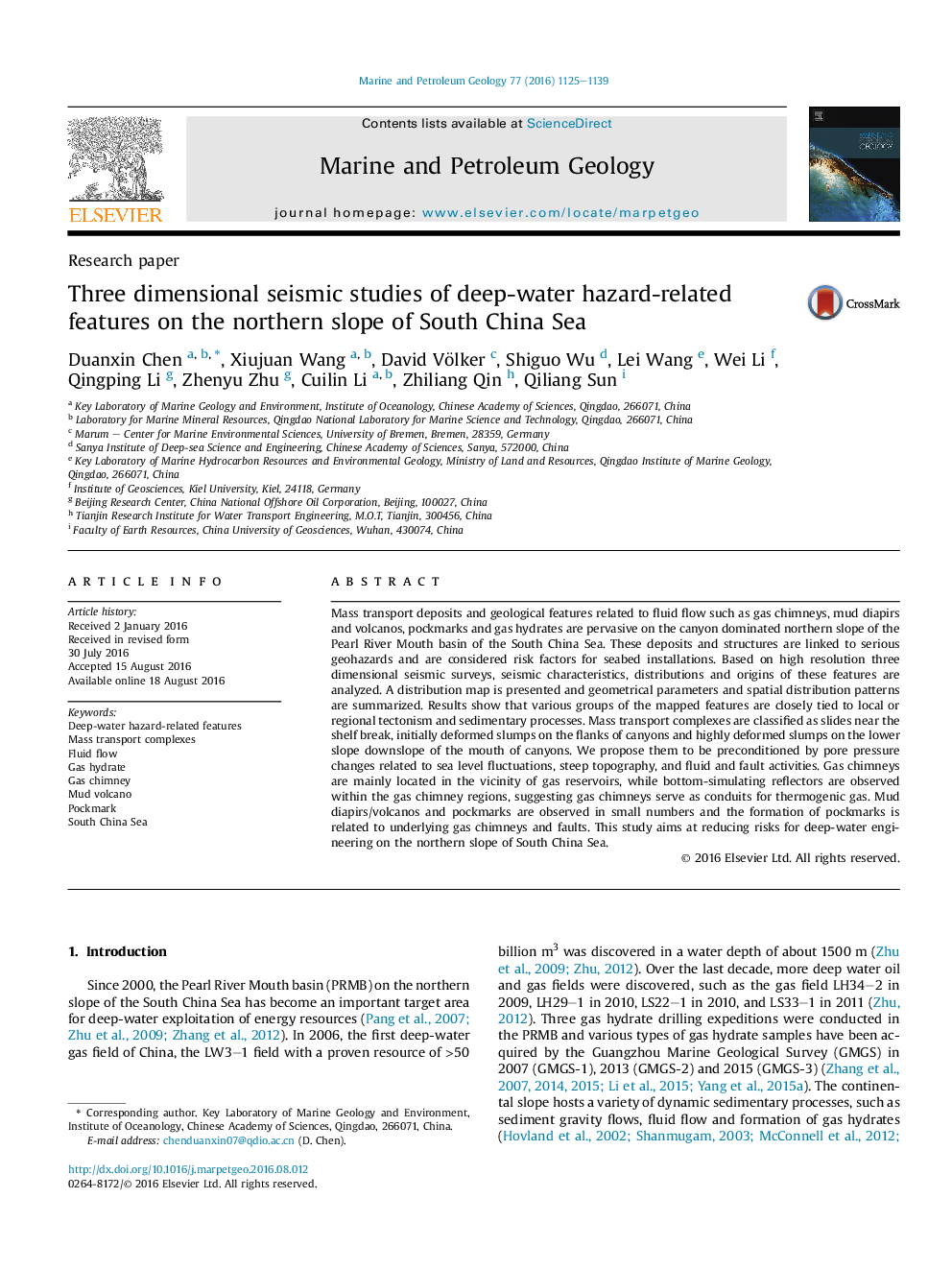| کد مقاله | کد نشریه | سال انتشار | مقاله انگلیسی | نسخه تمام متن |
|---|---|---|---|---|
| 6434671 | 1637150 | 2016 | 15 صفحه PDF | دانلود رایگان |
- Various types of hazard-related features are delineated and superposed.
- Three types of MTCs are identified and their origins are analyzed.
- Distribution of BSRs in gas chimney regions supports a thermogenic origin.
Mass transport deposits and geological features related to fluid flow such as gas chimneys, mud diapirs and volcanos, pockmarks and gas hydrates are pervasive on the canyon dominated northern slope of the Pearl River Mouth basin of the South China Sea. These deposits and structures are linked to serious geohazards and are considered risk factors for seabed installations. Based on high resolution three dimensional seismic surveys, seismic characteristics, distributions and origins of these features are analyzed. A distribution map is presented and geometrical parameters and spatial distribution patterns are summarized. Results show that various groups of the mapped features are closely tied to local or regional tectonism and sedimentary processes. Mass transport complexes are classified as slides near the shelf break, initially deformed slumps on the flanks of canyons and highly deformed slumps on the lower slope downslope of the mouth of canyons. We propose them to be preconditioned by pore pressure changes related to sea level fluctuations, steep topography, and fluid and fault activities. Gas chimneys are mainly located in the vicinity of gas reservoirs, while bottom-simulating reflectors are observed within the gas chimney regions, suggesting gas chimneys serve as conduits for thermogenic gas. Mud diapirs/volcanos and pockmarks are observed in small numbers and the formation of pockmarks is related to underlying gas chimneys and faults. This study aims at reducing risks for deep-water engineering on the northern slope of South China Sea.
Journal: Marine and Petroleum Geology - Volume 77, November 2016, Pages 1125-1139
